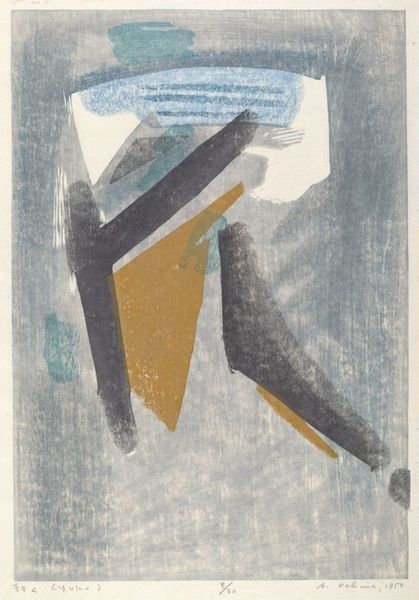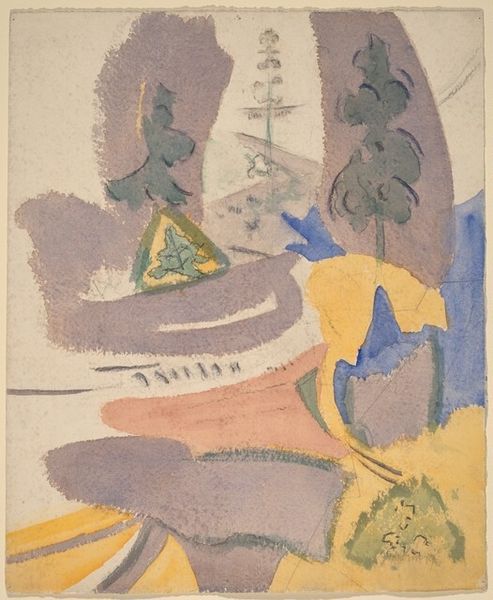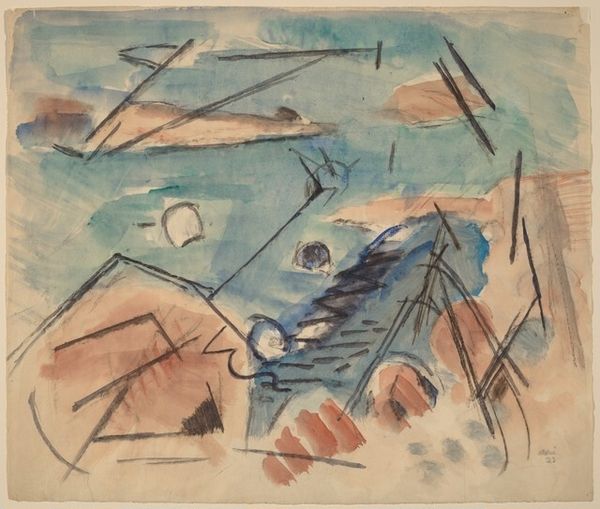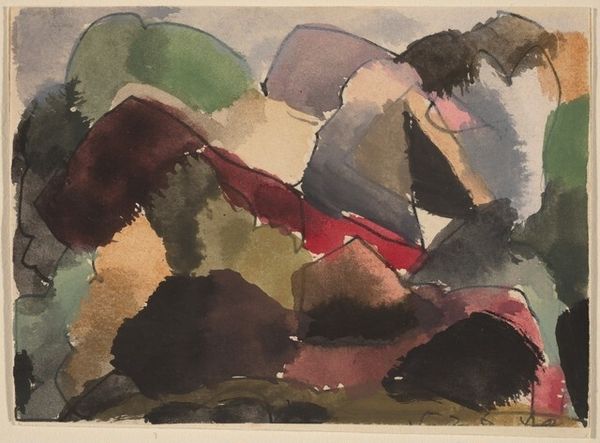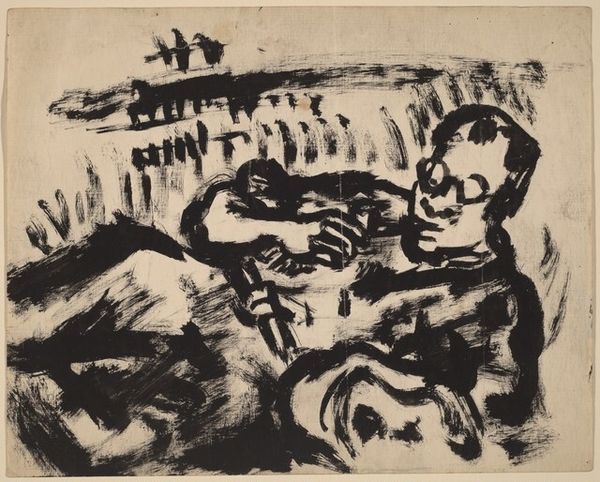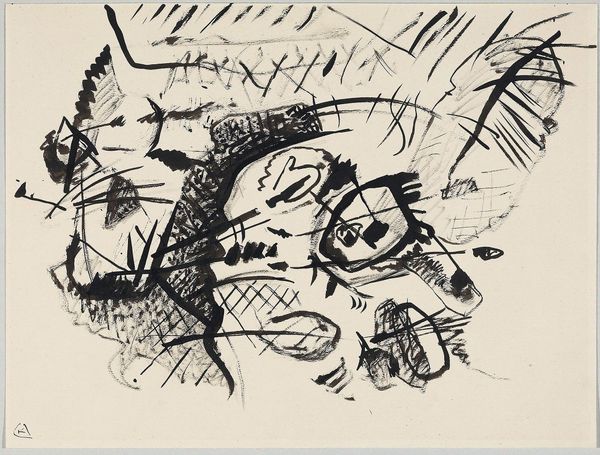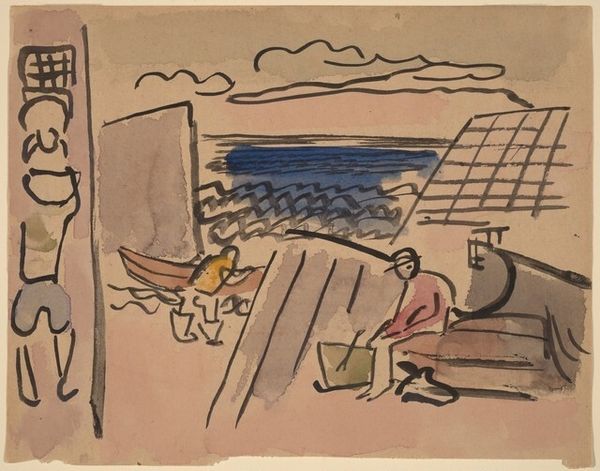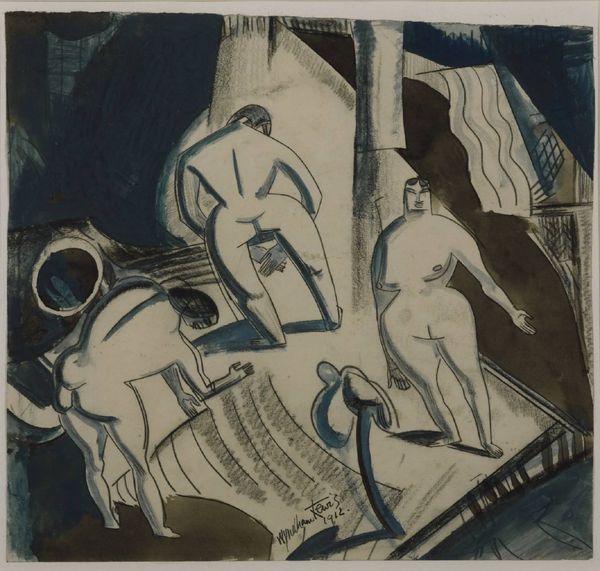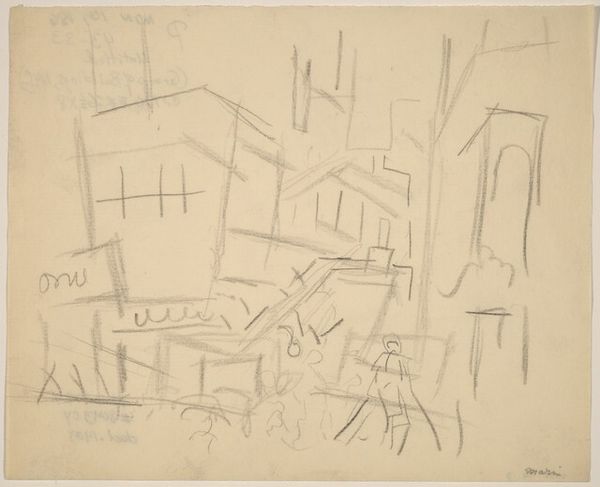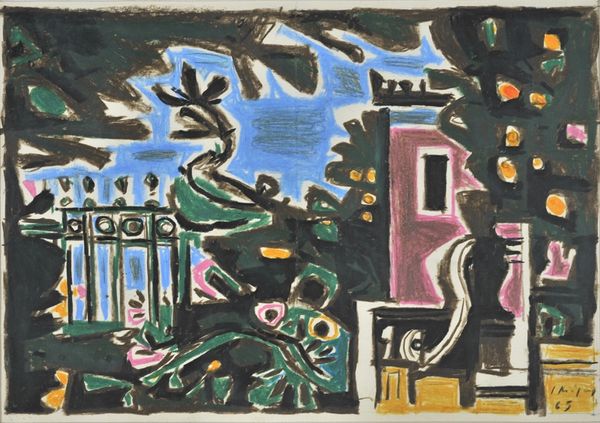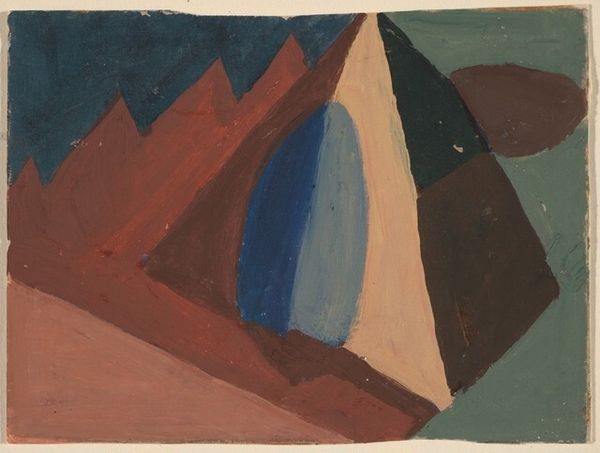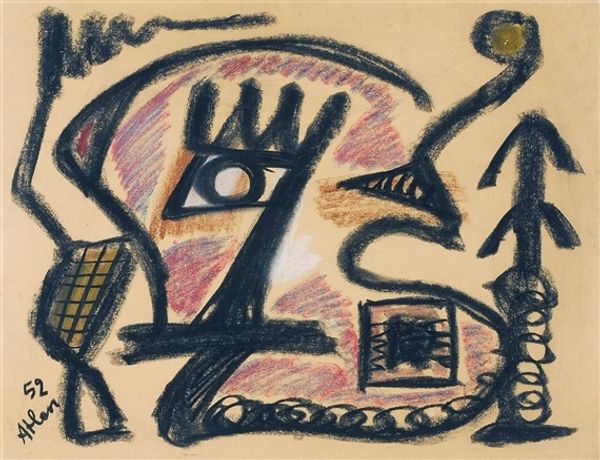
Dimensions: overall: 12.7 x 17.6 cm (5 x 6 15/16 in.)
Copyright: National Gallery of Art: CC0 1.0
Editor: We're looking at Arthur Dove's "Along the Shore" from 1937, done with watercolor. It feels...deceptively simple, almost childlike, but there's a real sophistication in how the shapes are arranged. What strikes you most about this piece? Curator: It's precisely that tension between simplicity and sophistication that I find so compelling. Dove was working during a period of immense social upheaval, the tail end of the Great Depression, anxieties about looming war… How do you think this apparent simplicity might speak to those concerns? Editor: I hadn't really considered that. It's almost…an escape? A deliberate turning away from the chaos? Curator: Precisely. And let’s not forget the broader art world context. European modernism was largely focused on urban experience. Dove, by focusing on the American landscape, specifically rural and coastal scenes, offered an alternative vision of national identity. How does that impact its message? Editor: So it's making a statement just by depicting what it does? Like it is reaffirming core values or providing contrast with European values? Curator: Exactly. The work’s materiality also carries weight, beyond just the subject it represents.. Why watercolor? Think about the associations – intimacy, fragility, the everyday. How does that change its overall impact, when compared to a grand oil painting for example? Editor: It feels less imposing. More approachable. I think I get what you mean by its social commentary. This quiet, unassuming landscape carries a radical message of resilience and a subtle political counter-narrative. It’s powerful because it *doesn’t* shout. Curator: Exactly. That subtle power allows viewers to actively engage and build our own understanding of that American Identity Dove hints at.
Comments
No comments
Be the first to comment and join the conversation on the ultimate creative platform.
